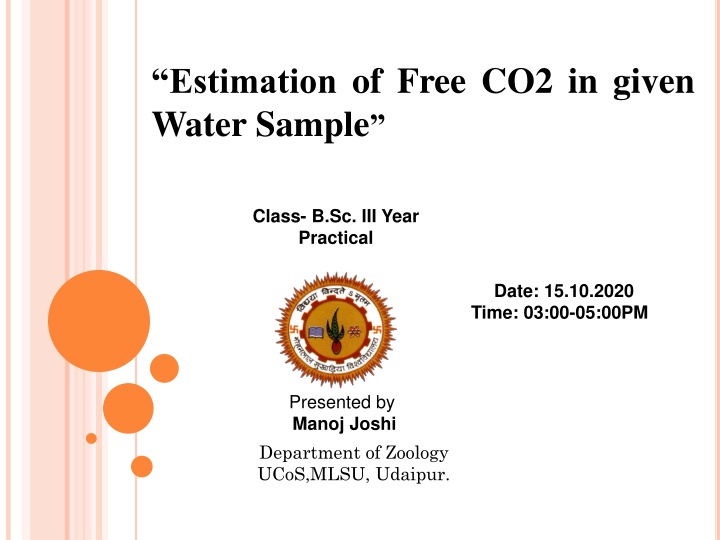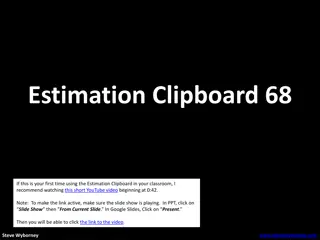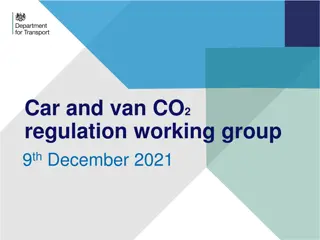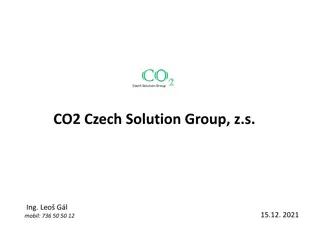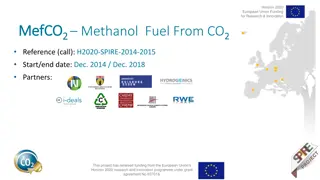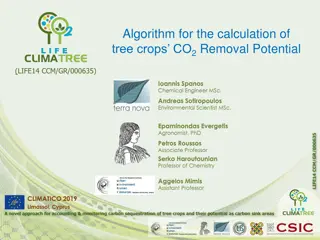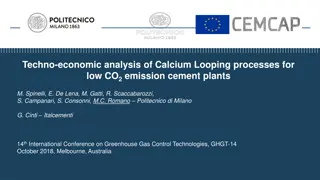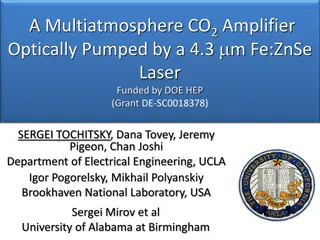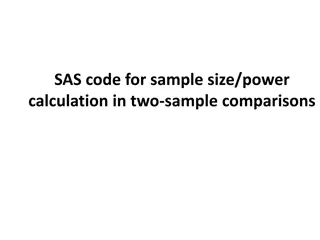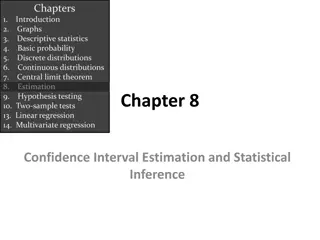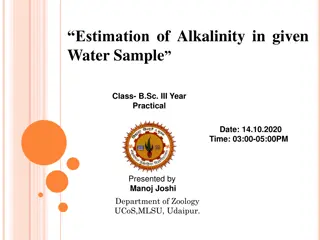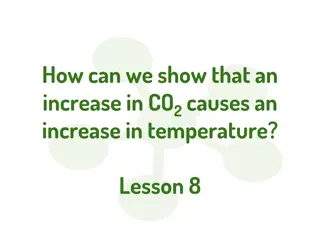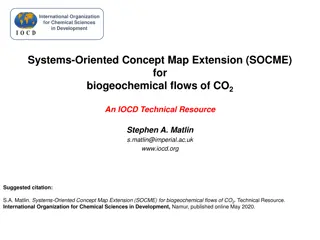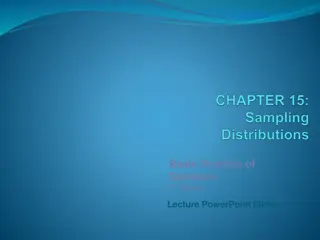Estimation of Free CO2 in Water Sample for B.Sc. III Year Practical
The practical session focuses on estimating free CO2 in a water sample using titration methods with NaOH and Na2CO3. Students learn the process of converting carbonic acid to neutral sodium bicarbonate to determine the presence of free CO2. Procedures, reagents, observations, and calculations are detailed to help students understand and perform the experiment effectively.
Download Presentation

Please find below an Image/Link to download the presentation.
The content on the website is provided AS IS for your information and personal use only. It may not be sold, licensed, or shared on other websites without obtaining consent from the author.If you encounter any issues during the download, it is possible that the publisher has removed the file from their server.
You are allowed to download the files provided on this website for personal or commercial use, subject to the condition that they are used lawfully. All files are the property of their respective owners.
The content on the website is provided AS IS for your information and personal use only. It may not be sold, licensed, or shared on other websites without obtaining consent from the author.
E N D
Presentation Transcript
Estimation of Free CO2 in given Water Sample Class- B.Sc. III Year Practical Date: 15.10.2020 Time: 03:00-05:00PM Presented by Manoj Joshi Department of Zoology UCoS,MLSU, Udaipur.
CO2 present in water is called free CO2. Free CO2 react with H2O and form carbonic acid which is titrated with strong base (NaOH) or weak base (Na2CO3). Carbonic acid convert into nutral sodium bicarbonate, by adding phenolphtalin indicator during titration at pH 8.3 it gives pink colour. 2NaOH + CO2=== Na2CO3 + H2O Na2CO3 + H2O + H2O + CO2 == 2NaHCO3. Free CO2 titratte by two methods:- (a) NaOH (b) Na2CO3
(a) By NaOH:- Reagents:- i. 0.05 N NaOH:- 40 gm + 1000 ml DW Heat and then Cool. ii. Phenolpthalien:- 50 ml 95% Ethenol + 500 mg Phenolpthalien. Procedure:- Collect 250-300 ml sample in Nessler tube carefully. Take 100 ml sample from collected sample in a conical flask. Add few drops of indicator if it shows pink colour then no free CO2 present in sample. If it remain colourless then titrate it up to pink colour appearance. Note the reading and repeat the process three times for better results.
Observation table:- Burette Reading End Sample Vol. (ml) S. No Mean Start 0.0 0.0 0.0 Total 1 2 3 100 100 100 Calculation:- Chloride mg/L= A x N of NaOH X 1000 x 44 ml of sample = A x 0.05 x 1000 x 44 100 = A x 22mg/L.
Thank You
